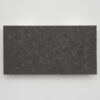Scott Burton (1939 – 1989) was an American sculptor best known for his large-scale furniture sculptures. His minimalist objects blur the lines between furniture design and sculpture, creating a unique aesthetic.
Burton discovered his love for art at a young age. However, he doubted that he could make it as an artist.1 Therefore, after graduation, he began a career as an art critic and worked as an editor for ARTnews. It wasn’t until a few years later, in the early 1970s, that he began making art himself – performance art. In his performances, he explored non-verbal communication, interpersonal dynamics, and body language.
At this time, he also created his first piece of furniture – the Bronze Chair. Since then, he has continued to build furniture. He called these functional pieces of furniture “Pragmatic Sculptures”. His idea was to create objects that were so anonymous and unobtrusive that they could be integrated into the concept of daily life.
At the age of only fifty, in 1989, Scott Burton died. His work is characterized by a desire to combine function and aesthetics, drawing inspiration from Russian Constructivism, De Stijl, and the Bauhaus. He always believed that art should “place itself not in front of, but around, behind, and under (literally) the audience.” He used a minimalist language in his work but challenged the idea of purity represented by other minimalist artists in America in the 1960s and 1970s.2
Burton understood that the most interesting pieces could be created on the border between art and design – so he created objects that had the intricacies of sculptural forms, but also the practicality to attract an audience beyond the established art world.
Further Reading / Resources
- https://www.wright20.com/artists/scott-burton
- Double Vision: Scott Burton by Elizabeth Essner via Philips Auction


